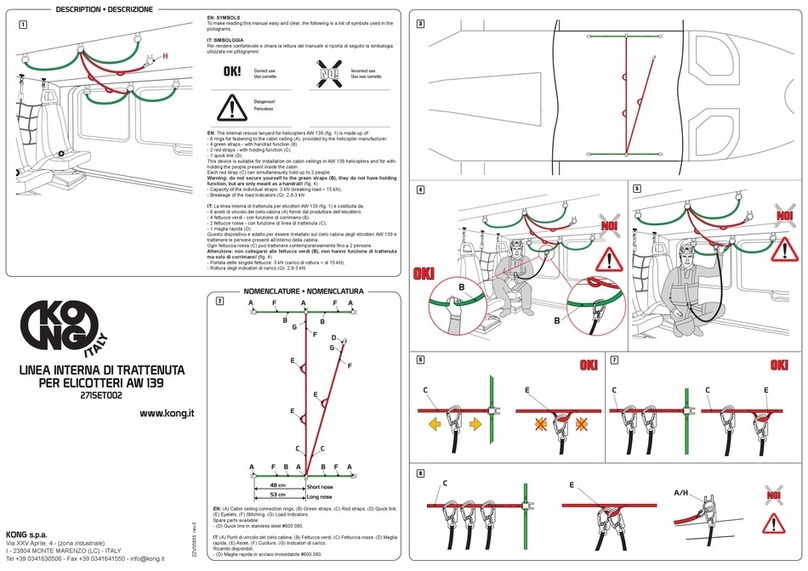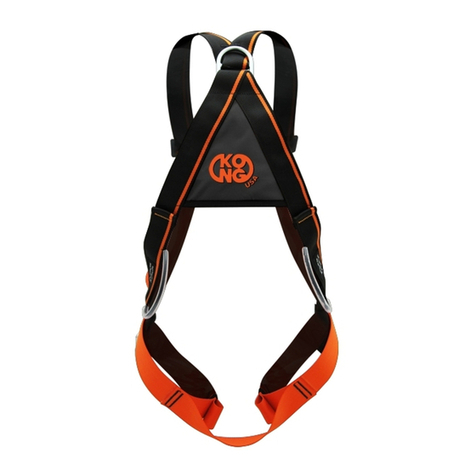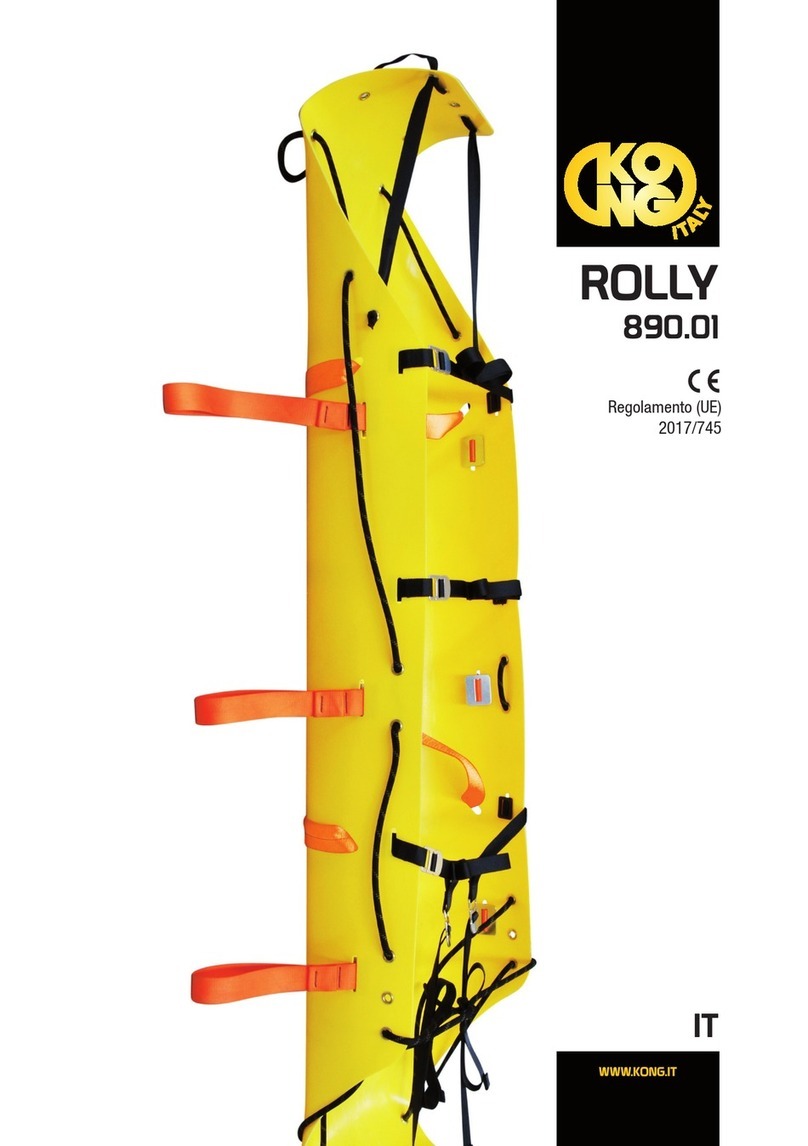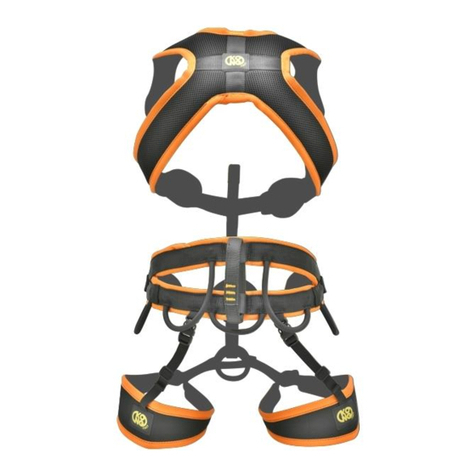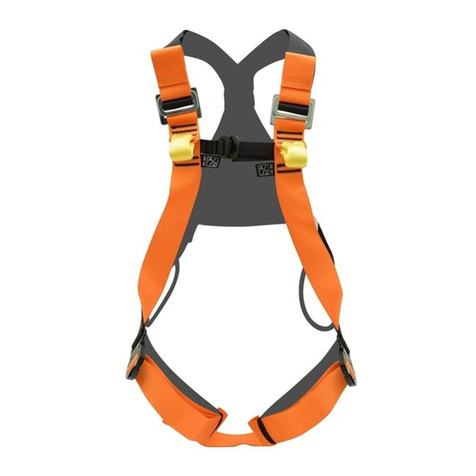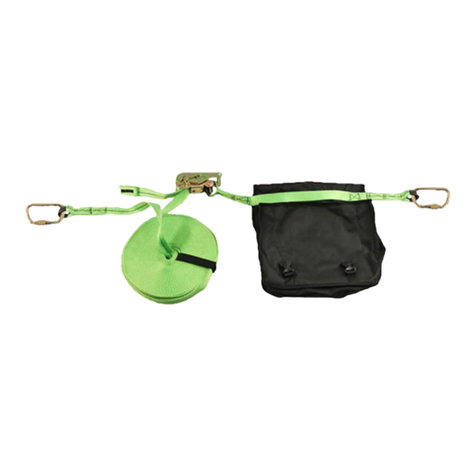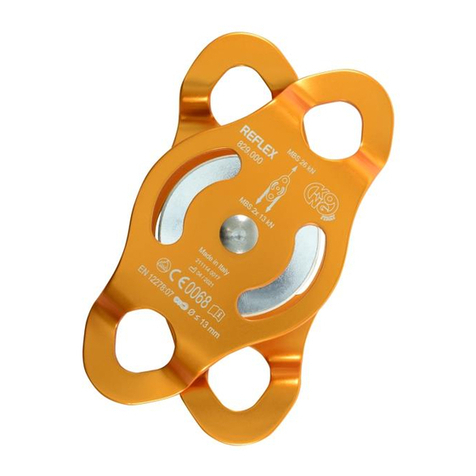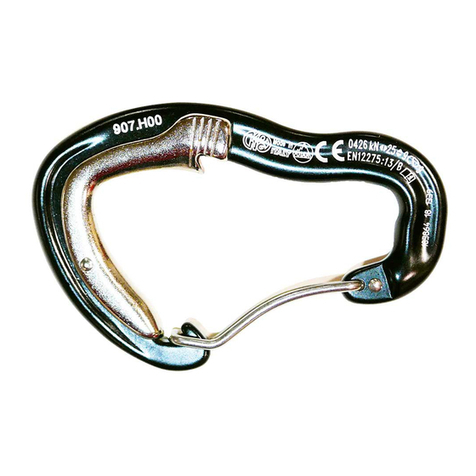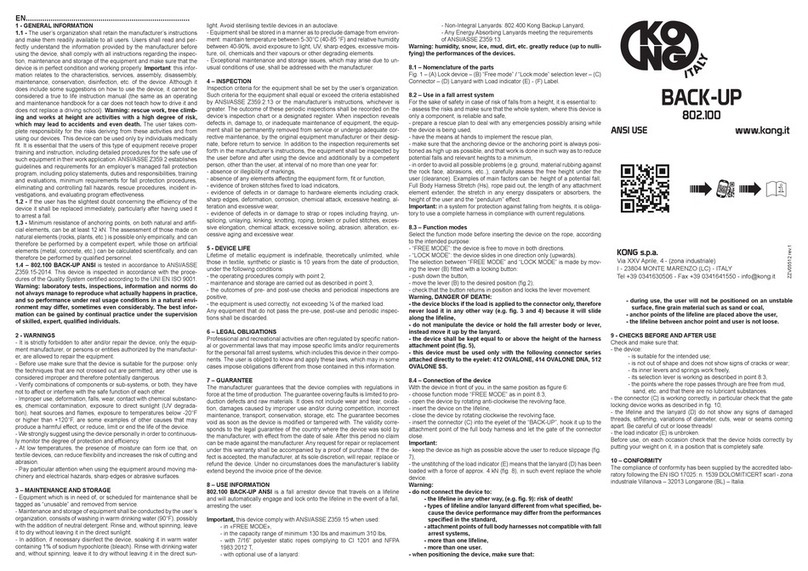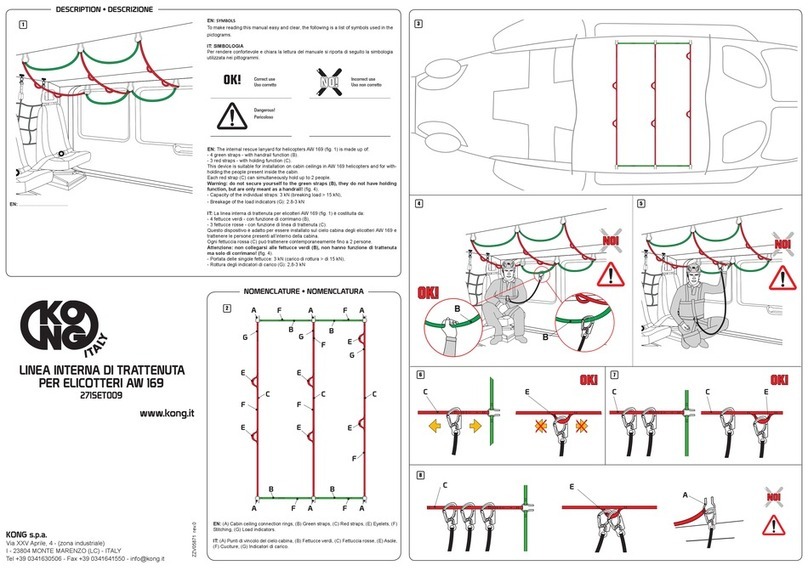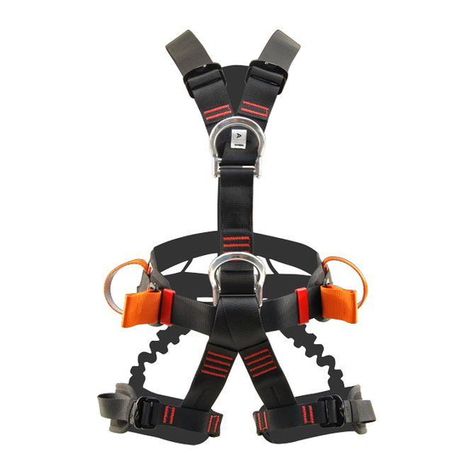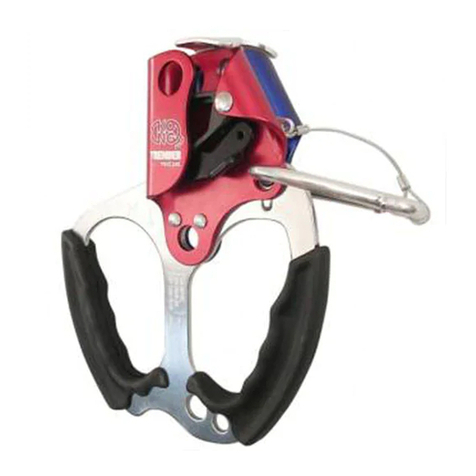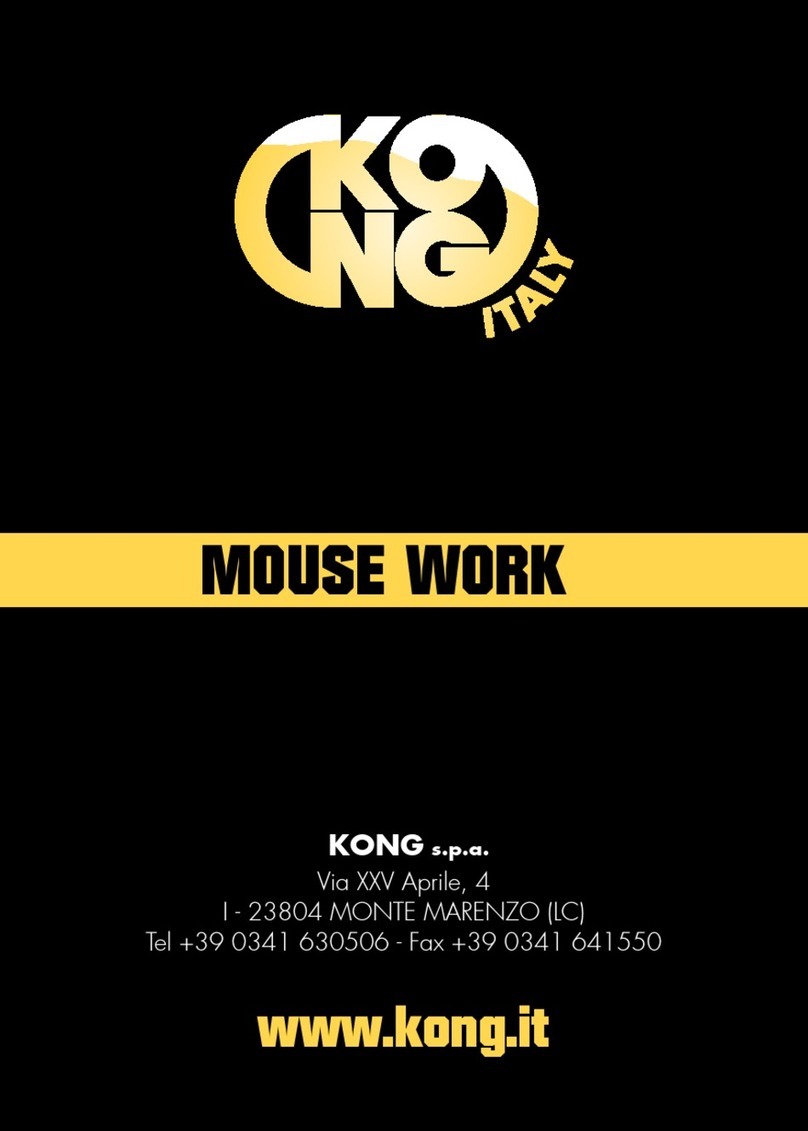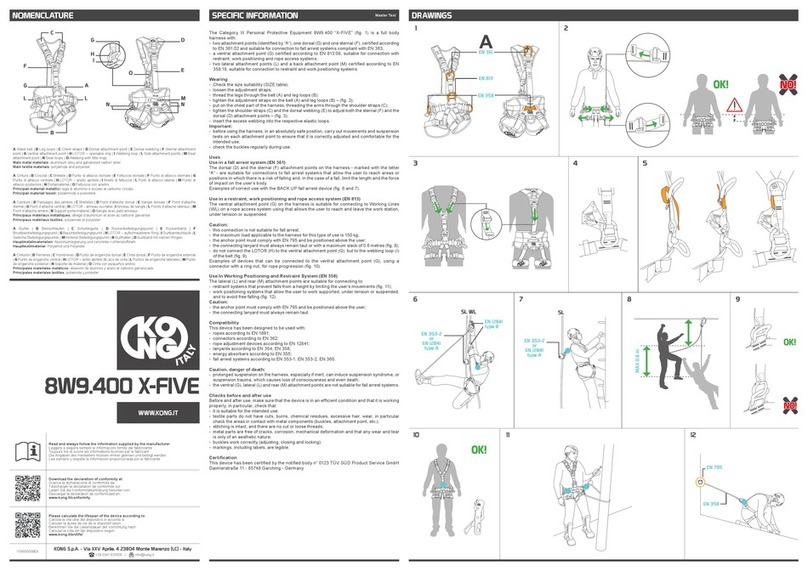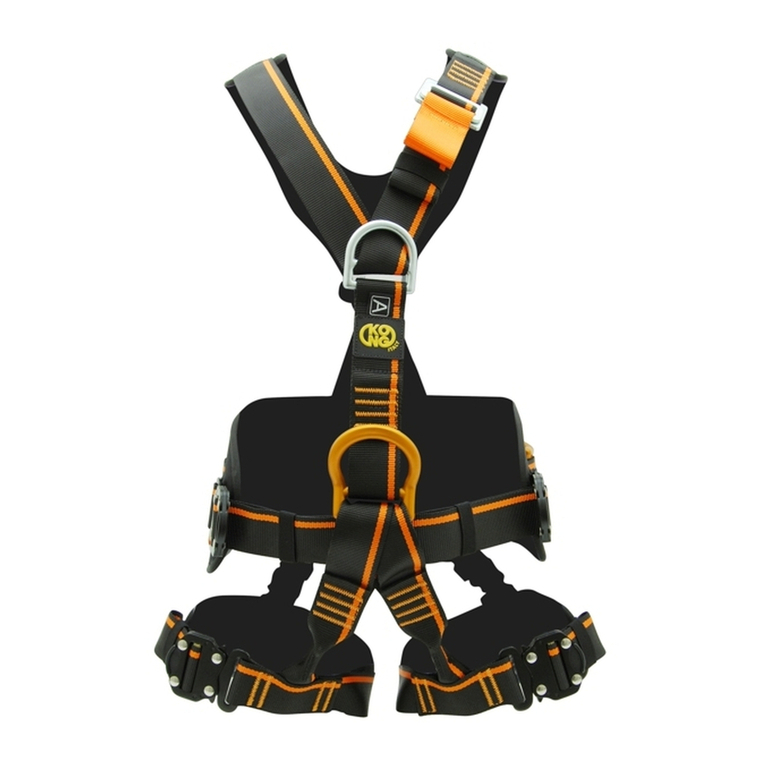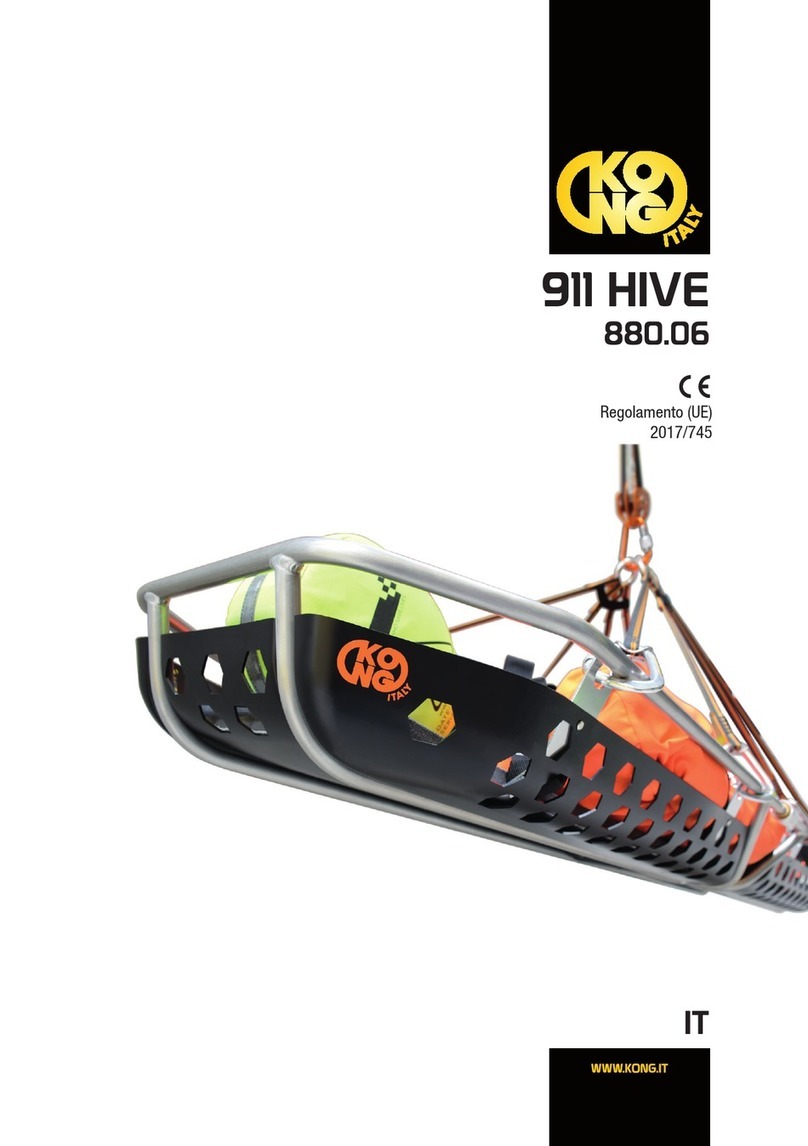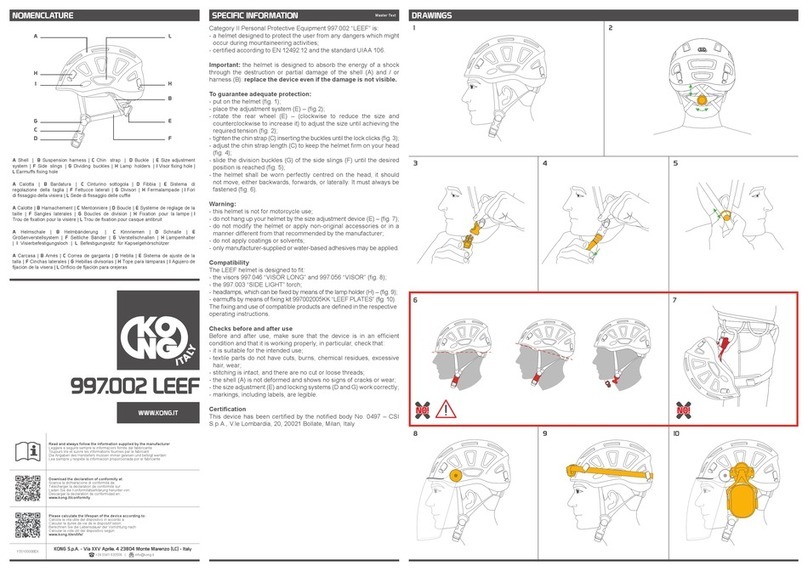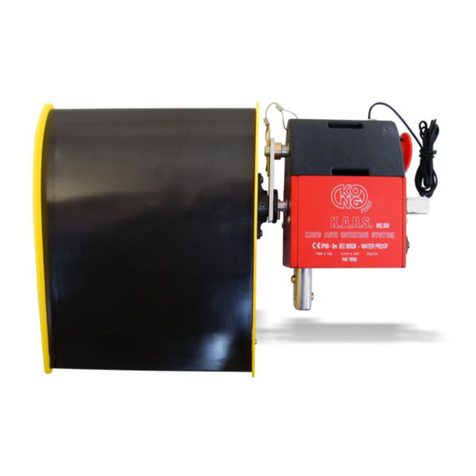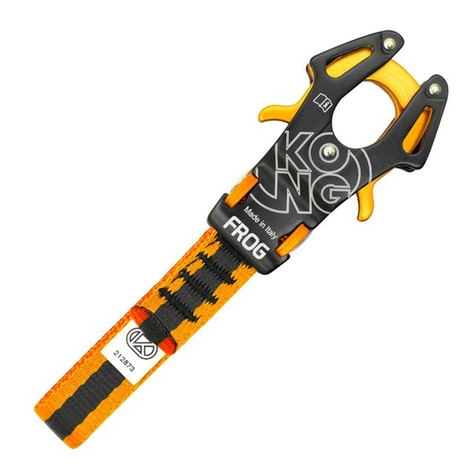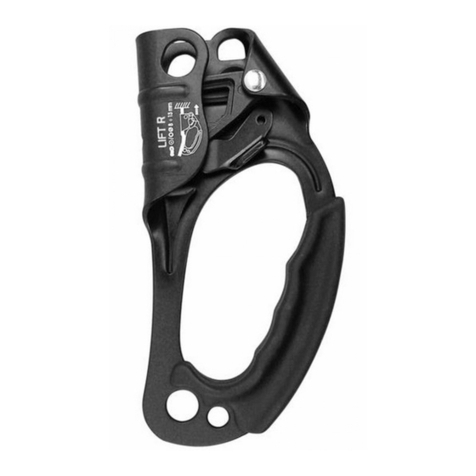
www.kong.it
5
CEVEDALE MONO
1GENERAL INFORMATION
A) Users must read and perfectly understand
the information provided by the manufacturer
(hereinafter ‘information) before using the
device.
WARNING
This information relates to the
characteristics, services, assembly,
disassembly, maintenance, conservation,
disinfection, etc. of the device. Although it
does include some suggestions on how to
use the device, it must not be considered
a true to life instruction manual the
same as an operating and maintenance
handbook for a car does not teach how
to drive it and does not replace a driving
school).
WARNING
Climbing rocks and ice, abseiling,
via ferrata, speleology, alpine skiing,
canyoning, exploration, rescue work,
tree climbing and works at height are all
activities with a high degree of risk, which
may lead to accidents and even death.
The user takes complete responsibility for
the risks deriving from these activities and
from using our device.
This device must be used only by
individuals medically t that have been
trained (and educated) in its use, or
under the direct control of instructors/
supervisors who can guarantee their
safety.
B) Before and after using the device, the user
must perform all the inspections described
in the specic information and, in particular,
must make sure that the device is:
- in perfect condition and working well,
- suitable for use: only the techniques that
are not crossed out are permitted, any
other use is considered improper and
therefore potentially dangerous.
C) If the user has the slightest doubt
concerning the efciency of the device, it
must be replaced immediately, particularly
after having used it to stop a fall. Improper
use, deformation, falls, wear, chemical
contamination, exposure to temperatures
below -30°C or higher than +50°C for
the textile/plastic components/devices,
and +100°C for metal devices, are some
examples of other causes that may reduce,
limit or end the life of the device. We strongly
suggest using the device personally in
order to continuously monitor the degree of
protection and efciency.
D) This device can be used combined with
personal protective equipment that conforms
to Directive 89/686/EEC when compatible
with the relevant information from the
manufacturer.
E) The anchoring position is essential for
safely stopping a fall: carefully assess the
free height under the user (clearance), height
of a potential fall, rope paid out, the stretch
in any energy dissipaters or absorbers, the
height of the user and the “pendulum” effect
in order to avoid all possible problems (e.g.
ground, material rubbing against the rock
face, abrasions, etc..).
F) Minimum resistance of anchoring points,
on both natural and articial elements, must
be 12 kN. The assessment of those made
on natural elements (rocks, plants, etc.) is
possible only empirically, and must therefore
be performed by a competent expert, while
those on articial elements (metal, concrete,
etc.) can be calculated scientically, and
must therefore be performed by qualied
personnel.
G) It is strictly forbidden to modify and/or
repair the device.
